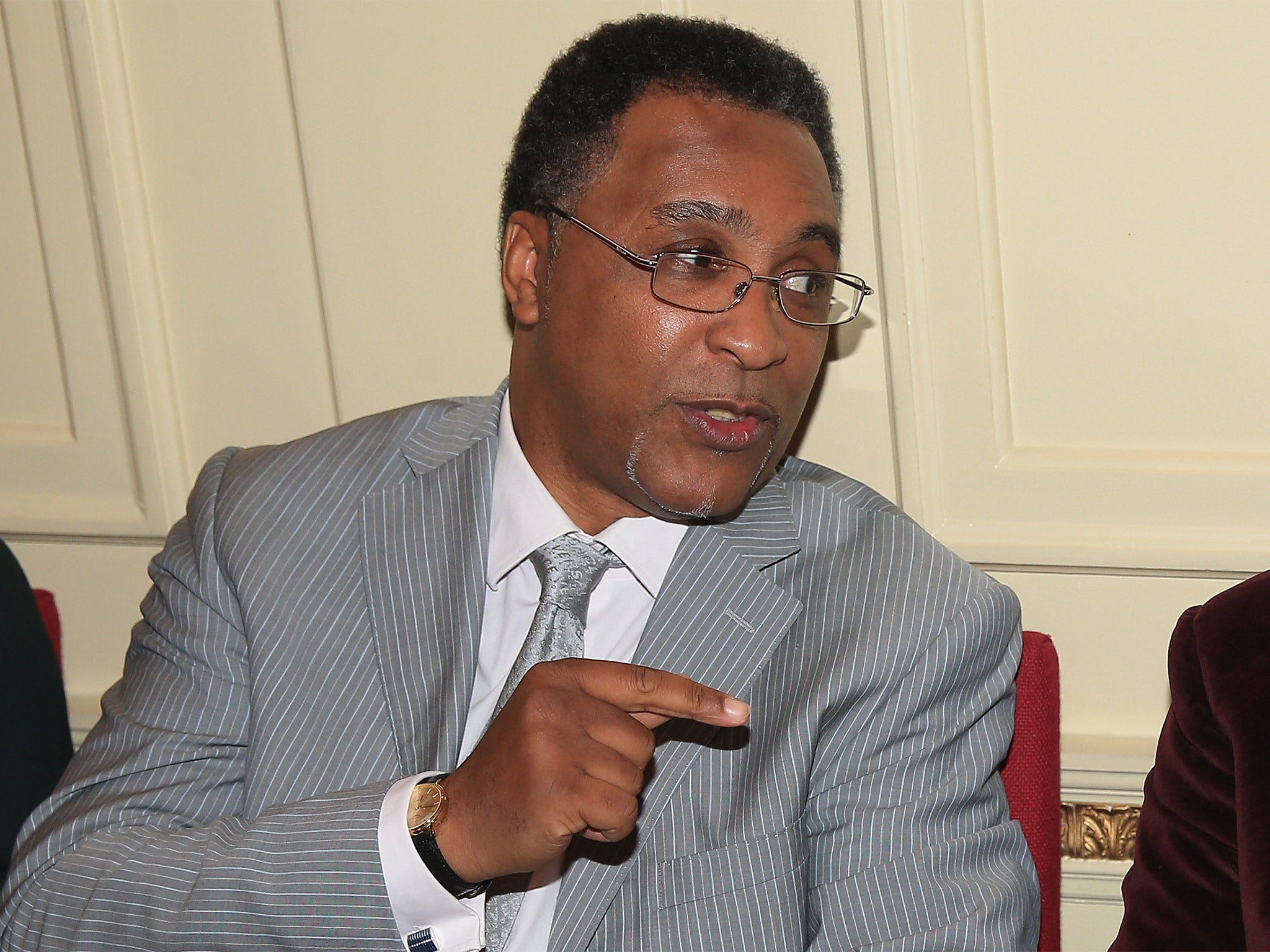Steve Bunce column: Michael Watson nearly died in the ring - now this miracle man is 50
The minutes inside the golden hour were ticking and the clock was winning

There was a bag lady, an eminent surgeon, a night of prayer and a desire to live that defied logic when Michael Watson was rushed all over north London in September 1991.
At 23:08 on 21 September 1991, Watson left White Hart Lane on an old-fashioned stretcher following his rematch with Chris Eubank. He was unconscious, he was dying.
Last week, Watson turned 50. He was smiling, eating, walking and still planning a future that nobody can really explain. “He’s just Michael,” is about the best reason that anybody can offer.
“The fight was over at 10:54pm and five minutes later I started to die in the ring. It is that simple,” Watson wrote in his 2004 autobiography, The Biggest Fight. “I was placed on the bloodstained canvas in my corner when it was obvious that I could no longer stand on my own.”
When the ambulance carrying Watson arrived at the local hospital, North Middlesex, it was 23:22.
His prognosis improved slightly when he was resuscitated and I have an image from the hospital of his boxing boots sticking out from the edge of a curtain in a silent and empty ward. I thought he was dead. I now know he had been placed in the empty, dimly lit ward to get him away from all the usual Saturday night chaos of the emergency rooms.
The resuscitation was a temporary win, but the minutes inside the golden hour, the permissible lapse between injury and surgery, were ticking. North Middlesex did not have the facilities at that time of night to save Watson’s life and at 23:55 he was transported to St Bartholomew’s. The clock was winning and I have heard harrowing conversations about the realistic prospects for the man who arrived that night.
At St Bart’s, the neurological team – led by senior registrar George Stephenson – were ready for Watson’s arrival. The consultant neurosurgeon, Peter Hamlyn, was in a taxi, making his way in from a quiet night at home. When Hamlyn arrived, a media pack was in position outside the hospital and there was no way he could rush through the entrance. Again, time was lost, a miracle was needed
Hamlyn directed the taxi to the back of the hospital. When he got out, he started pulling desperately on doors, any doors he could find. He was locked out and he knew that crucial seconds were being lost. He pulled in vain at one heavy set of doors, then banged them in frustration. He suddenly sensed movement on the other side in the darkness of the old stairwell and then the doors opened. Hamlyn had been let in by the bag lady of St Bart’s, a woman who lived inside the old building. Hamlyn rushed without a word up the stairs to start the life-saving surgery. He had twice performed operations on boxers to scrape blood clots from the surface of their brains and they had both survived. It was nearly two hours since Watson had collapsed.
Well, Hamlyn did what he did that night and in the coming months and he is still doing it. That uneasy Sunday morning, he gave a brief statement to the media, delivered quietly and out of earshot of Watson’s mum and the prayer circle from her church which had formed throughout the night. Watson’s health deteriorated and that afternoon he needed more surgery. This time he was the closest he ever came to death.
Enjoy 185+ fights a year on DAZN, the Global Home of Boxing
Never miss a fight from top promoters. Watch on your devices anywhere, anytime.
ADVERTISEMENT. If you sign up to this service we will earn commission. This revenue helps to fund journalism across The Independent.
Enjoy 185+ fights a year on DAZN, the Global Home of Boxing
Never miss a fight from top promoters. Watch on your devices anywhere, anytime.
ADVERTISEMENT. If you sign up to this service we will earn commission. This revenue helps to fund journalism across The Independent.
“I’m 50 ... that is a miracle and Peter made it happen,” Watson said this week. The biggest fight continued, continues in many ways to this day, with victories over blood clots, coma, painful rehab, the years building a life and a savage court case for compensation, not forgetting the loneliness of finishing a London Marathon.
Today, Watson and his full-time carer and inseparable friend, Lennard Ballack, can be seen walking the streets of north London to keep him fit. They are the same streets he ran when he was training for fights, not far from where he was born and grew up, where Hamlyn performed his miracle, where Watson spent years of soul-destroying rehab, where he trained for the marathon and close to the pulpit he has preached from.
He hasn’t lost his sense of humour, either. Now he’s 50, he just might fancy one more big fight, he says: “I’m looking at some offers.” Ballack just shakes his head and says: “Nobody knows how he got to 50.”
Since that September night in 1991, I have heard so many people, myself included, ask how he has done it. I’m still waiting for an answer.
Michael Watson’s 50th Birthday Celebratory Fund-raiser for Teenage Cancer Trust is at London’s Park Lane Hotel on 23 April. For more information, email: michaelwatsonmbe@aol.com
Join our commenting forum
Join thought-provoking conversations, follow other Independent readers and see their replies
Comments